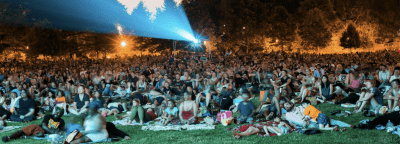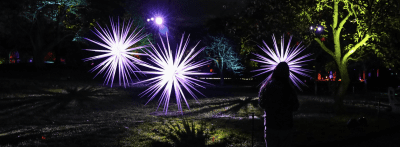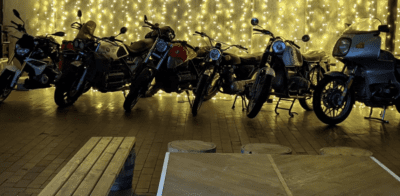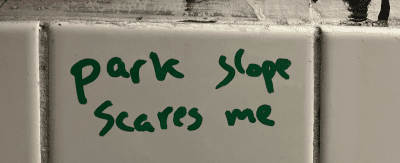Meet the man behind the man behind Guided by Voices
Musician-engineer-producer Travis Harrison discusses Dumbo studio life, getting ahead of the Covid curve and more
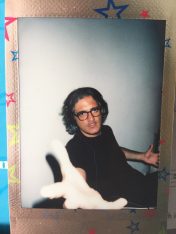

Harrison
You may have never heard the name Travis Harrison, but if you’re into indie music you’ve heard some of his work. The musician, engineer and producer has worked or played with Built to Spill, Guided by Voices, members of Travis, The Boredoms, Fred Armisen, and OK Go, all while recording and mixing over 1,000 other acts during the live-in-the-studio sessions of the BreakThruRadio project.
Born and raised in Long Island, Harrison has lived in New York City for most of his adult life. After graduating from Columbia in 2001, he worked as a drummer in the indie music scene while launching his studio, production company and record label Serious Business Music. In 2014 he relocated his studio from Manhattan’s SoHo neighborhood to the basement of a large old brick building on Pearl Street in Dumbo.
By then, Harrison had already started working a bit with Robert Pollard, the indie trailblazer and mastermind of Guided by Voices. The collaboration has taken him all over the world, put him behind the drums for the 2016 Pollard-led project “ESP Ohio,” and made him a real-time sound engineer, producer and archivist for Pollard’s seemingly endless creative output.
Brooklyn Magazine recently sat down with Travis to talk about his work, and what it means to be “the George Martin” of one of the world’s most influential indie bands, and developing a method for recording and producing Guided by Voices albums and side projects with the band’s members spread over four states.
How are you doing these days?
Good! I just got out of Covid jail, because my wife had it. It was very mild. Mostly the torture of not being able to go out. I’ve been in this basement all day, my studio in Dumbo.
We wanted to talk to you about that, in part because people don’t normally associate Dumbo with recording studios.
This building in Dumbo is over 100 years old, takes over a whole city block, and the basement is a lot of people like me, doing music and stuff. It’s very Brooklyn—it’s a basement, it’s dingy, but just in the time that I’ve been here the neighborhood has changed a lot. It’s become a lot more crowded and touristy because of Brooklyn Bridge Park. I’m constantly dodging selfie sticks.
Your studio is in a block that’s almost like a micro-cosmos of the city: it has a pizzeria, a taco joint, and a poetry shop.
Yes! I don’t know how he makes [the poetry shop] work as a business! It’s cool. That’s been there for quite a few years, and they have events there! I’ve never been able to go to them. I should, though.
Do you still release albums through your record label?
The label is very ancient history. I haven’t put out a new record through it since 2012, so I’m really just working on my studio.
Before the pandemic you kept busy with the BreakThruRadio project. Let’s talk about that.
BreakThruRadio is a content creator, they’ve been going since 2006 or something. They have this BTR live studio thing where twice a week they had touring bands come into my studio, and record four or five songs, real quick, and then they would do an interview. It became a very regular way to book the studio, but also to meet musicians and to see these bands live essentially, but in a controlled environment, where I’m playing a role. I did that from 2010 to 2020, almost exactly 10 years, and all that stuff is on YouTube and on their website, and podcasts.
And since the pandemic?
I’ve done a couple projects with these people I know, things that come up during this time, but it’s been way less than normal. It’s been strange. It never feels like it’s not busy because Guided by Voices is charging so hard—we launched this email audio subscription service called “Hot Freaks,” which fills in all the cracks—and we’re always going a million miles an hour.
How much of your time do you devote to working in the world of Robert Pollard today? With something like “Hot Freaks,” you’re sort of an archivist, producing and releasing recent and live and studio recordings.
With Covid, it’s been a blessing in a way because it’s been taking about 90 percent of my time. I love working on Bob’s music, and the last few records, we’ve gotten into different grooves than we would have if there was so much life rushing by us, like we did in the past, so it’s cool, man! I think the newest one [“Styles We Paid For”] is the best!
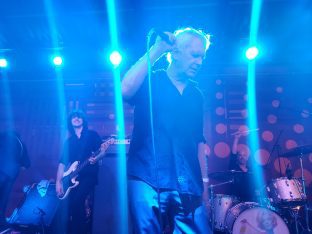
Remember live shows? GbV, fronted by Pollard
How did you hook up in the first place?
I first met [guitar player] Doug Gillard in 2009 or 2010, around that time. I mean, I’m a fan! It just immediately went to gush zone, and I had the studio, and said, “Come over, hang out.” And I said, “Is there ever going to be a new [Pollard and Gillard duo] Lifeguards album?” And Doug said, “Maybe, actually I just spoke to Bob about it”. It was the right timing and I wound up in this position to do this record [Lifeguards’ “Waving at the Astronauts”] with Doug, which is great, and then Bob came and did his vocals in my studio. It was awesome!
And then you played drums on “ESP Ohio.” Pollard has actually said he considers you to be “the sixth member of Guided by Voices.”
That’s very nice of Bob to welcome me in like that. It does kind of work like that, how we interact. It’s different when the band is playing live, but I’m doing the sound! I’m in a very unique position to be able to help Bob in this way, it’s awesome! You know, they don’t tour with crew or anything, so I’m kinda helping on that end.
To bring it back to Brooklyn, do you think having your studio in Brooklyn has in any way influenced the way you work, or even the sound of what you do?
Over the years, I’ve tended to favor closer, tighter kind of sounds that I associate with New York City, so I’m less prone to ambient stuff. Maybe it’s my own head, but we’re always in little basements or smaller spaces, you know, smaller drum sets, smaller amps, less big stacks with combo amps. Everything is just smaller, tighter, you know? And that tends to be part of the sound by necessity!
You might also like 

















